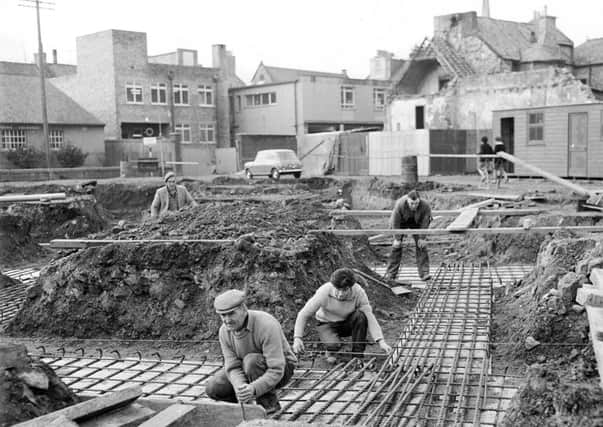Dalkeith reveals its treasures during renovation


The weapon, which may have been used by an officer in the Dalkeith Militia nearly a century ago was found in a property on the corner of White Hart Street and South Street, reports the Dalkeith Advertiser (October 5, 1961).
“The sword is corroded with rust and only part of the leather scabbard remains, the rest having been eaten away by time and mice.
Advertisement
Hide AdAdvertisement
Hide Ad“Mr James Rafferty, of 36 Woodburn Road, Dalkeith, who found the sword, was one of the men employed on the work of demolition.
“Since the removal of buildings in the area was started there have only been a few ‘finds’ of interest from an historical point of view or as a reminder of the past, although many of the buildings were old.
“In the premises of one pawnshop in the town, there was a box containing thousands of pawn tickets covering a period of years in the early 1900s. These showed what happened in the ‘good old days’ when jackets were pawned for 6½d.
“The tickets revealed that the pawnbroker was ‘entitled to charge for the ticket one halfpenny. For profit on each two shillings or the part of calendar month, one halfpenny. Any pledge must be redeemed within twelve months and seven days or become the property of the panwbroker’.
Advertisement
Hide AdAdvertisement
Hide Ad“The tickets left by John B. Myers, Eskdaill Street, Dalkeith, who carried on business on the site known as The Wicket, bear evidence that a great variety of goods were handed in as pledges.
“Among the items and the prices were: trousers, 1/3; half-blanket, 1/6; boots, 3/-; topcoat, 2/-; suit, 5/-; gold ring, 3/-; semmet and drawers, 1/-; skirt and blouse, 1/3. Most of the clients appear to have resided near the pawnshop. Frequently mentioned are The Wicket, High Street, Eskdaill Street, Candle Close, White’s Close, Back Street, Cowan’s, Port, Young’s Close.
“A Dalkeith Advertiser, dated October 27, 1910, was also found in one of the houses behind the High Street. It reports that a special Masonic service would be held at Loanhead Parish Church and that in the Wesleyan Methodist Church, Eskbank, a ‘Sacred Cantata’ entitled ‘The Ship of Life’ would be given by the Abbeyhill Wesleyan choir.”
Meanwhile, the Dalkeith Advertiser (October 12, 1961) reported from Dalkeith Juvenile Court on the case of five girls caught stealing potatoes.
Advertisement
Hide AdAdvertisement
Hide Ad“A Dalkeith farmer who was very annoyed by the number of school children making raids on his potato field and running off with the spoils kept special watch one day. He saw five girls in the field and he stopped them. It was found that between them they had 14lbs of potatoes.
“At Dalkeith Juvenile Court the girls all pleaded guilty in the presence of their parents to the offence charged against them. It was stated that the girls when caught had freely confessed to the farmer that they were doing wrong.
“The magistrate was told that the girls all came from good homes and although the value of the potatoes stolen was only 2/6 it was not this but the damage they did that made the case one of greater seriousness. The burgh procesutor Mr George Dick said he felt sure the girls had learned a lesson they would not readily forget and he felt sure also that the parents would co-operate in seeing that the children behaved in future.
“The magistrate said that two of the older girls should have shown the younger ones a good example and have kept them out of trouble. He said he would admonish the five girls on this occasion, but they should remember it was not only a shame on themselves to appear in court but it was a shame to bring their parents into court also. ‘Go home now and do not come back here again,’ he advised.”
Advertisement
Hide AdAdvertisement
Hide AdThe South Midlothian Advertiser (October 6, 1961) reports: “The ‘ghost’ house, ‘Woodhouselea’, near Milton Bridge, has been bought by the Rev George Buchanan-Smith. Price paid for the mansion house and 17 acres of land, two cottages, coach house and stables was £5900. The auction attracted a large crowd but few were probable buyers. It is said the house is haunted by the ghost of Lady Anna Bothwell. But the ghost will not bother the new owners as they do not intend living there. Mr Buchanan-Smith, who is chaplain to Fettes College, and his wife Margaret intend to turn the property into riding stables. Legend of the ghost is known locally but not treated seriously.”